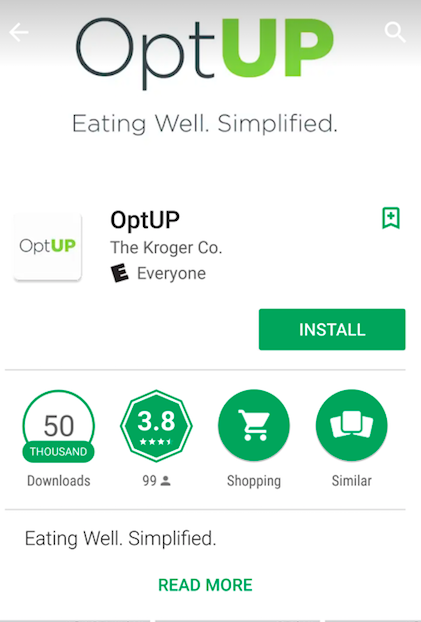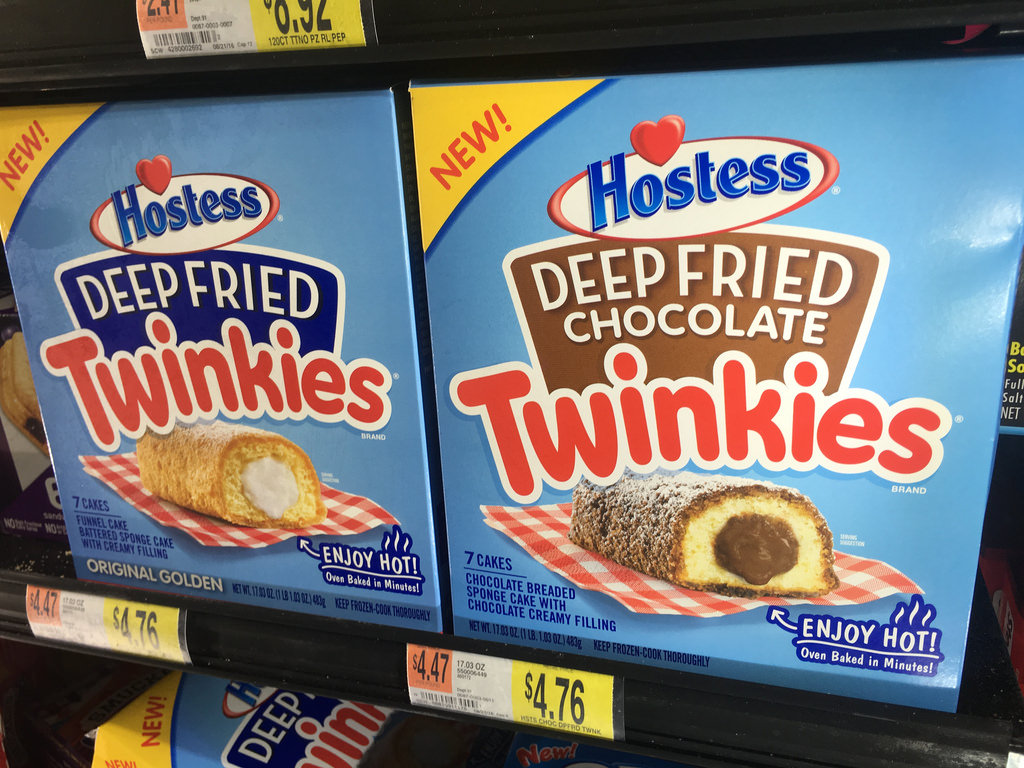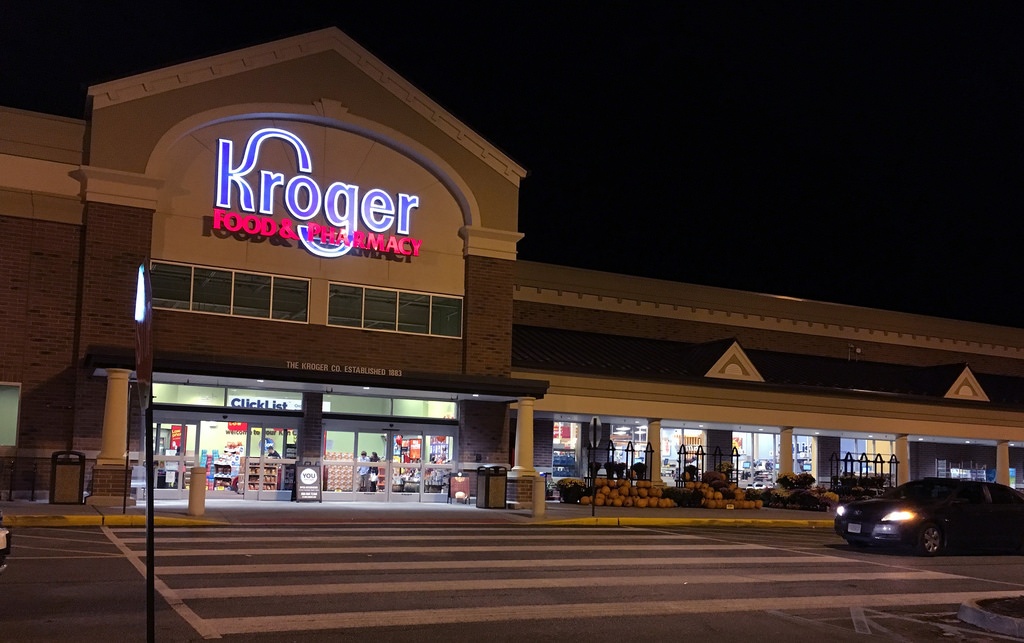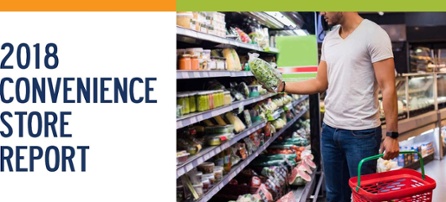Kroger is making a tech play for the health-conscious consumer, releasing an app called OptUP that offers easily understood information about the products in their stores. Available in Kroger locations and various banners such as Fred Meyer and GFC (full disclosure: Ralphs Fresh Fare is unquestionably this blogger’s grocer of choice), OptUP is part of Kroger’s broader “Wellness Your Way” initiative, aiming to help customers craft and control their own nutritional journeys.
Kroger’s press release called OptUP “transformational for the food retail industry,” noting it “puts nutritional information at [customers’] fingertips and makes finding and buying better-for-you products easier and simpler.”
While transformational is a tough bar to clear, the app is no doubt useful and on trend with other happenings in the grocery industry. So let’s all opt into some market research up and down the grocery aisles as we consider the ways the app will enhance in-store experiences and customer loyalty as well as identify any potential complications it may create.
OptUP Gets (and Gives) the Green Light
OptUP came about through a collaboration between Kroger’s health, tech, digital, and in-house market research teams. And they like the result, as Chief Digital Officer Yael Cosset noted: “The data-driven app creates a more transparent and educational experience for our customers, continuing our commitment to help Americans shop, eat and live healthier on their terms.”
Here’s how it works: the app, available on IOS and Android, allows customers to scan products and immediately see a 1-100 score based on the product’s health attributes. The score comes from national dietary guidelines and is curated by Kroger’s in-house dietitians.

Of course, the precise definition of “healthy” is hotly contested these days (and don't even get us started on 'natural'), but Kroger seems to be on trend with current scientific and cultural understandings: products that are low in sodium, sugar, and saturated fat but pack a healthy fiber and protein load will score the highest.
Based on their score, products are broken into three color-coded categories: Red (1-35), Yellow (36-75), and Green (76+). The implications of these colors is obvious, encouraging customers to speed up or slow down their purchasing. Indeed, Kroger encourages customers to fill their carts with at least 50% green items and even allows for progress tracking over 8-week periods as consumers aim to increase their green score.
With shoppers able to track purchases and compete against their previous periods’ scores, Kroger has essentially gamified nutrition. Beyond self-tracking in the name of self-improvement, one can imagine (and Kroger no doubt already is imagining) consumers competing against one another to see who can rack up the healthiest baskets—something like a FitBit challenge but with food not exercise. (Certainly some peaceful cherub out there is saying, “Why does everything have to be a competition?!” Well, those are just the times we live in. Blame capitalism?)
Leveling Up OptUP
Over time, the app will only get more personalized, allowing consumers to input personal health needs (lowering cholesterol) and dietary preferences (no meat, no gluten, no dairy, etc.) to get individuated scores based on their specific profiles. It will even allow consumers to book appointments with Kroger dietitians.
Some things remain to be seen. Will OptUP ultimately integrate directly into Kroger’s main app and its already robust loyalty program, or will it remain solo? Obviously, from a UX perspective, integration would be nice ensuring customers don’t have to switch back and forth to find an item that is both nutritious and on special in the weekly ad.
Customers and Manufacturers: Sometimes it’s Tough to Keep Them Both Happy at the Same Time
There are some concerns, of course, the biggest of which has to do with grocer-manufacturer relations. Look, Hostess knows good and gosh darn well that Twinkies are about as healthy for us as a sugar and saltwater smoothie, and shoppers know it too. Twinkies are an indulgence that consumers purchase despite their better health instincts, not because of them. So, bring on the red label, see if Hostess cares—their target market probably won’t even opt in to OptUP anyway.

But what of manufacturers of not-that-great-for-you goods that are cloaked in a health food veneer? From candy bars masquerading as protein bars to breakfast granola and candy-sweet yogurt, there are many less-than-healthy products imitating healthy ones, and their manufacturers may feel exposed by OptUP’s insights.
Here, Ahold’s USA banners might be instructive. Earlier this year, Stop & Shop and Giant rolled out their Guiding Star nutritional labeling. Unlike OptUp, Guiding Star consists of a shelf-based labeling system that rates products on a 1-3 star criteria (one star short of Star Search). One star means good, two stars mean better, three stars mean best.
These ratings are based on an algorithm evaluating nutritional content and, here’s the interesting part, only apply to foods that meet certain criteria. This means they highlight the good while leaving the not-so-good alone. There are no sad faces or empty stars in front of the Flamin‘ Hot Cheetos, just a pricetag.
This perhaps helps Ahold assuage manufacturers of less-than-nutritious and far-from-nutritious food, while also steering customers to healthier, and perhaps higher-margin, items.
Grocery Market Research Helps Crack Healthy Customers' Code
As we discussed earlier this week, and to the surprise of nobody, the health-conscious consumer is here to stay. They are more curious and proactive about their food’s nutritional content, and the FDA (despite some delays) is helping them in their quest by updating food labels.
They have learned that fat is not fatal, that sugar is bittersweet, and that food resembling its natural state, as opposed to its post industrial one, is almost always better for them.
Obviously, OptUP is on trend with these times, incentivizing customers’ exploration of new products in a quest that resembles Pokemon Go in all the best ways possible. If, along the way, customers happen to choose a product with slightly better margins, well, that’s a win-win for everybody involved.
With their whip-smart in-house market research team (84.51) on the case, they are no doubt way ahead of the game when it comes to collecting and analyzing qualitative and quantitative data streams. Though it just went into primetime, the app had a soft launch in May and data scientists have no doubt been pouring over the numbers and narratives, optimizing and debugging along the way.
Our best guess is that they are running shop-alongs, mobile ethnographies, and panel surveys right now like nobody’s business…because it is their business to know how customers shop with this app.
What's good for the customer is good for the grocer and Kroger is no doubt taking a data-driven approach to optimize OptUp as they offer their customers a data-driven approach to shopping.


